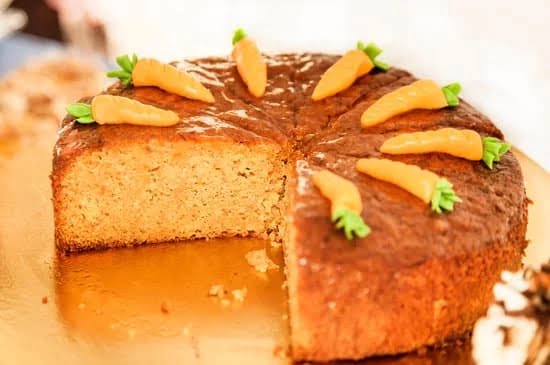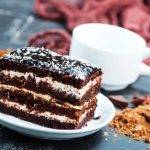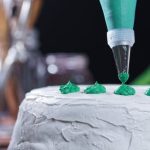Buttercream cakes are not only delicious but also works of art, often intricately decorated for special occasions. Whether you’ve made or purchased a beautifully adorned buttercream cake, it’s essential to store it properly to maintain its freshness and appearance. Improper storage can lead to drying out, loss of flavor, and damage to the delicate decorations. In this article, we will guide you through the necessary steps to store a decorated buttercream cake correctly.
Understanding the nature of buttercream is crucial when it comes to storing it effectively. Buttercream is a smooth and creamy frosting made from a combination of butter, sugar, and other flavorings. Being composed mainly of fat and sugar, buttercream has specific storage needs that differ from other types of frostings. It is highly sensitive to temperature changes and can melt or become too firm if not stored properly.
Choosing the right container is vital in maintaining the stability and protection of your decorated buttercream cake. The ideal container should provide enough space for the cake without smudging or damaging any decorations. It should also have a tight seal to prevent air exposure that could result in drying out the cake. Plastic containers with snap-on lids or sturdy cardboard cake boxes with clear plastic windows are excellent options for storing buttercream cakes.
Properly wrapping and covering the cake before storage is essential to prevent drying out while maintaining moisture inside. A few simple steps can make all the difference in preserving your beautiful creation. By following these guidelines, you can ensure that your decorated buttercream cake stays fresh and visually appealing for maximum enjoyment.
Understanding the nature of buttercream
Buttercream is a popular frosting choice for cakes due to its rich and creamy texture. It is made by combining butter, sugar, and flavorings such as vanilla or chocolate. Understanding the composition of buttercream is essential for knowing how to properly store it and maintain its quality.
The main ingredients in buttercream are butter and sugar. Butter is prone to melting and softening at higher temperatures, while sugar helps stabilize the mixture. This means that buttercream can become too soft or even melt if exposed to warm conditions. Therefore, it is crucial to store decorated buttercream cakes in a cool environment.
In addition to its sensitivity to temperature, buttercream is also vulnerable to air exposure. As with any type of frosting, when buttercream comes into contact with air, it begins to dry out. This can lead to a loss of moisture in the cake and result in a less desirable texture. To prevent this from happening, it is important to store buttercream cakes in an airtight container.
To ensure the best possible storage conditions for your decorated buttercream cake, it is recommended to keep it refrigerated. The cool temperature of the refrigerator helps firm up the buttercream and prolongs its freshness. However, you should be cautious about exposing the cake directly to strong odors or flavors in the refrigerator as they can potentially transfer onto the cake.
| Composition of Buttercream | Storage Needs |
|---|---|
| Butter | Vulnerable to melting and softening at higher temperatures |
| Sugar | Helps stabilize the mixture and prevent melting |
| Air exposure | Dries out the buttercream, leading to a loss of moisture |
| Airtight container | Prevents air exposure and maintains freshness |
| Refrigeration | Firms up the buttercream and extends its freshness |
Choosing the right container
Choosing the right container is crucial to ensure the stability and protection of a decorated buttercream cake during storage. The container plays a significant role in preventing the cake from getting damaged or losing its shape and design. Here are some ideal container options to consider when storing a decorated buttercream cake.
Firstly, using a cake box with a sturdy base and a clear plastic lid is often the most convenient option. Cake boxes are designed specifically for storing cakes and provide a secure and stable environment. The clear plastic lid allows for visibility, so you can admire your beautifully decorated cake without having to open the container repeatedly.
Another option is using a cake carrier or caddy. These containers are equipped with handles for easy transportation and usually have locking mechanisms to keep the lid securely in place. Cake carriers also come in various sizes, making them suitable for different cake sizes and designs.
For those who prefer environmentally-friendly choices, reusable silicone food storage containers are an excellent alternative. These containers are flexible yet durable, providing protection for the cake while being easy to clean and store when not in use.
Regardless of the type of container chosen, it’s important to ensure that it has enough space to accommodate the size of the cake without squishing or damaging any decorations on top or on the sides. A tight fit can ruin the appearance of the cake and make it difficult to remove from the container later on.
Preparing the cake for storage
Step 1: Allow the cake to cool completely
Before you start wrapping and covering the cake, it is crucial to ensure that it has cooled down completely. If you attempt to store a warm or hot cake, it can lead to condensation inside the container, which can make the cake soggy or ruin the decorations. Allow the cake to cool for at least two hours at room temperature before proceeding with the storage process.
Step 2: Level and shape the cake
Leveling and shaping the cake before storage is essential for maintaining its appearance and stability. Use a serrated knife or a leveling tool to remove any domes or uneven surfaces from the layers of the cake. Trim any excess frosting along the edges as well. This will ensure that your cake stays level during storage and prevents any accidents that may damage its decorations.
Step 3: Crumb coat and chill
Before wrapping your buttercream cake, consider applying a thin layer of frosting called a crumb coat. This acts as a barrier between the moist crumbs of your cake and the final layer of frosting, preventing them from mixing together. It also helps in keeping moisture locked in. Once you have applied the crumb coat, place your cake in the refrigerator for about 20-30 minutes to allow it to set.
Step 4: Wrap with plastic wrap
After chilling, gently cover your decorated buttercream cake with plastic wrap. Make sure it is completely covered from top to bottom, sealing in all sides tightly. This step helps retain moisture and prevent drying out while being stored.
Step 5: Cover with an airtight container
Finally, place your wrapped buttercream cake in an airtight container that provides enough space for both height and width without compressing or damaging any decorations on top. Glass or plastic containers with tight-fitting lids work best for this purpose. Make sure the container is clean and dry before placing the cake inside to avoid any contamination.
By following these steps, you can effectively prepare your buttercream cake for storage, ensuring its freshness and maintaining its moisture during the entire duration of storage. Properly wrapping and covering your cake will also help in preserving the flavors and prevent it from drying out or losing its delicious taste when stored for an extended period.
Refrigeration vs. room temperature storage
When it comes to storing a decorated buttercream cake, one important decision to make is whether to refrigerate or store it at room temperature. Both methods have their pros and cons, and understanding them can help ensure that your cake stays fresh and delicious for as long as possible.
Refrigeration
Refrigerating a decorated buttercream cake has its advantages. The lower temperature helps to preserve the freshness of the cake by slowing down any bacterial growth. It also helps to maintain the stability of the buttercream frosting, especially in warmer climates where the frosting can melt more easily.
To refrigerate a decorated buttercream cake, start by making sure it is properly covered or placed in an airtight container to prevent any odors from seeping into the cake. You can use plastic wrap or a cake carrier with a tight-fitting lid. It’s essential to keep the cake away from strong-smelling foods in the refrigerator, as buttercream absorbs odors easily.
It’s important to note that refrigeration can impact the texture of the cake itself. The cold temperature can cause moisture condensation on the surface, which may result in a slightly damp exterior. To avoid this issue, allow the cake to come to room temperature before serving.
Room Temperature Storage
Storing a decorated buttercream cake at room temperature is another option worth considering. This method allows for easy access and avoids any potential changes in texture caused by refrigeration. However, it is crucial to find a cool spot away from direct sunlight or heat sources to prevent melting or spoilage.
To store a decorated buttercream cake at room temperature, carefully cover it with plastic wrap or place it inside an airtight container. If you decide to use plastic wrap, make sure it is tightly sealed to prevent any air from drying out the cake. If using a container with a lid, ensure that it fits snugly to maintain freshness.
Keep in mind that room temperature storage is more suitable for cakes with fillings and frostings that can withstand the slightly higher temperatures. It’s also important to consider the climate and humidity of your location, as higher humidity levels can affect the stability of buttercream frosting.
Freezing a decorated buttercream cake
When it comes to long-term storage of a decorated buttercream cake, freezing can be a viable option. Freezing not only allows you to preserve the cake for an extended period but also helps maintain its taste and quality. However, it is essential to follow specific tips and instructions to ensure that the cake freezes properly without compromising its texture or flavor.
Before freezing a decorated buttercream cake, it is crucial to make sure that it is adequately wrapped and protected. Start by placing the cake on a cardboard base to provide support during the freezing process. Next, tightly wrap the entire cake with plastic wrap, ensuring that no portion is exposed. This will prevent freezer burn and help maintain the moisture of the cake.
Once the cake is wrapped in plastic wrap, place it in a freezer-safe container or airtight bag for further protection. Make sure that the container or bag is sealed tightly to prevent any air from getting in, as exposure to air can result in dehydration and loss of taste. Label the container with the date of freezing to keep track of its storage time.
To provide additional safeguarding from potential temperature fluctuations inside the freezer, consider wrapping another layer of aluminum foil around the container or bag. This secondary layer will act as an extra barrier against any changes in temperature that may affect the quality of the frozen cake.
| Steps | Description |
|---|---|
| Place on cardboard base | Provide support during freezing process |
| Wrap with plastic wrap | Tightly cover entire cake to prevent freezer burn and maintain moisture |
| Place in freezer-safe container or bag | For further protection, seal tightly to prevent air exposure |
| Wrap with aluminum foil | Create extra barrier against temperature fluctuations |
Frozen buttercream cakes can typically be stored for up to three months in the freezer without significant loss of quality. It is essential to note that when you are ready to serve the cake, it should be thawed gradually in the refrigerator. This slow thawing process helps maintain the cake’s moisture and prevents any condensation from forming on the decorations. Allow the cake to thaw overnight or for several hours before serving.
By following these tips and instructions, you can freeze a decorated buttercream cake effectively without compromising its taste and quality. However, it is crucial to consider that freezing may alter some delicate decorations or textures on the cake. Therefore, it is recommended to assess the suitability of freezing based on the specific design elements of each individual cake.
Thawing and serving the cake
Thawing a frozen or refrigerated buttercream cake requires careful consideration to preserve its texture and flavor. Follow these guidelines to safely thaw and serve your cake:
- Plan ahead: It is essential to allow enough time for the cake to thaw slowly and evenly. Transfer a frozen cake from the freezer to the refrigerator at least 24 hours before serving. For refrigerated cakes, remove them from the fridge 2-3 hours prior to serving, allowing them to reach room temperature gradually.
- Keep it covered: While thawing, keep the cake covered with plastic wrap or a cake dome to prevent condensation from forming on the surface, which could cause the decorations to become soggy or runny.
- Avoid direct heat sources: Do not attempt to speed up the thawing process by placing the cake near a heater or in direct sunlight. Gradual thawing in a cool environment is crucial for maintaining the quality of the buttercream.
- Assess doneness: Once the cake has thawed, gently touch the surface with your finger or a toothpick to check if it feels soft and supple. If it does not feel fully defrosted or still feels firm in some areas, allow it more time at room temperature.
- Decorate before serving (if necessary): If you need to add any final touches or decorations to the cake, such as fresh fruit or whipped cream toppings, do so just before serving. This prevents these delicate elements from becoming waterlogged or deteriorating during storage.
- Serve with care: Use a sharp knife dipped in warm water between each slice for clean cuts that won’t disturb the design of your decorated buttercream cake.
By following these guidelines, you can safely thaw and serve your frozen or refrigerated buttercream cake without compromising its texture or flavor. Enjoy your beautifully preserved creation.
Tips for maintaining the cake’s appearance
Decorating a buttercream cake is a work of art, and it’s important to ensure that all the intricate details are preserved until it’s time to serve. Here are some additional tips and tricks to maintain the cake’s appearance and keep it looking just as beautiful as when it was first decorated:
- Avoiding condensation: Condensation can be a common issue when storing a buttercream cake, especially if it’s being refrigerated. To prevent condensation from forming on the cake, make sure it is completely cooled before storing it. Additionally, avoid placing the cake in a container that has just been taken out of the refrigerator or freezer, as this sudden change in temperature can cause moisture to form on the surface of the cake.
- Preventing smudging or smearing: Buttercream decorations are delicate and can easily smudge or smear if not handled properly during storage. To prevent this, create a protective barrier around the cake by covering it with a layer of plastic wrap or wax paper before placing it in its storage container. This will help protect the decorations from rubbing against the sides of the container and getting damaged.
- Handling with care: When moving or handling the decorated buttercream cake, be gentle to avoid any accidental damage. Use caution when removing the cake from its container and ensure that your hands are clean and dry to prevent any transfer of moisture or oils onto the surface of the cake.
- Touching up decorations: If you notice any minor imperfections or smudges on the buttercream decorations after storing, don’t worry. You can easily touch them up using an offset spatula or a small food-safe brush. Gently smooth out any smudges by lightly dabbing them with clean hands or tools.
By following these additional tips and tricks for maintaining a decorated buttercream cake’s appearance, you can ensure that your masterpiece stays stunning until it’s time to be enjoyed by all. Remember, attention to detail during storage is just as important as the actual decorating process itself.
Troubleshooting common storage issues
One common issue that may arise during the storage of a decorated buttercream cake is the appearance of condensation on the cake surface. Condensation can occur when the cake is moved from a cool environment to a warmer one, causing moisture to form on the surface. This can lead to colors bleeding and decorations becoming smudged or smeared.
To overcome this issue, it is important to allow the cake to come to room temperature gradually before serving. This can be done by transferring the cake from the refrigerator to a cool room for about 30 minutes before serving. By allowing the cake to adjust slowly, condensation will have less chance of forming on its surface.
Another common storage issue is the drying out of buttercream. Buttercream has a tendency to crust if left uncovered, resulting in a dry and unappetizing texture. To prevent this, it is important to wrap the cake tightly with plastic wrap or store it in an airtight container. This will help retain moisture and keep the buttercream soft and fresh.
If you find that your buttercream cake has dried out during storage, there are still ways to revive it. One method is to lightly brush the surface of the cake with simple syrup before serving. The syrup will add moisture back into the buttercream, making it softer and more enjoyable. Additionally, adding a thin layer of fresh buttercream on top of the dried out areas can help restore its texture.
By being aware of these common storage issues and implementing these solutions, you can ensure that your decorated buttercream cake stays looking and tasting its best even after being stored for some time. Properly addressing these issues will help preserve your hard work and maintain the quality of your delicious creation.
Conclusion
In conclusion, storing a decorated buttercream cake properly is essential to maintain its freshness, appearance, and taste. Throughout this article, we have explored the specific storage needs of buttercream and provided step-by-step guidance on how to prepare the cake for storage. We discussed the pros and cons of refrigeration versus room temperature storage, as well as tips for freezing the cake for long-term preservation without compromising quality.
Choosing the right container is crucial to ensure stability and protection for your cake. Wrapping and covering the cake properly is also vital in preventing drying and maintaining moisture. When thawing and serving a frozen or refrigerated cake, it is important to follow safety guidelines to preserve its texture and flavor.
Additionally, we provided tips for maintaining the cake’s appearance, such as avoiding condensation and preventing smudging or smearing of decorations. Troubleshooting common storage issues was also addressed, offering solutions to overcome any problems that may arise during the process.
Properly storing a decorated buttercream cake not only ensures its longevity but also preserves its quality and taste. By following the guidelines outlined in this article, you can confidently store your cake while maintaining its original beauty and flavor. So next time you find yourself with leftover or freshly baked buttercream cakes, remember that proper storage techniques are key to enjoying them at their best.
Frequently Asked Questions
Does a cake with buttercream frosting need to be refrigerated?
Whether or not a cake with buttercream frosting needs to be refrigerated depends on various factors. Generally, buttercream is made with ingredients like butter and milk, which can spoil if left unrefrigerated for too long.
However, if the cake is being served within a day or so, it is generally safe to leave it at room temperature for that period without refrigeration. Refrigerating a cake with buttercream frosting can cause the icing to harden and lose its smooth texture, so it’s best to assess the situation and use your judgment based on how long you plan to keep the cake before consuming it.
How do you store a cake with buttercream icing overnight?
When storing a cake with buttercream icing overnight, there are several steps you can follow to maintain its freshness and quality. Firstly, make sure the cake has completely cooled down before proceeding. Once cooled, cover the cake with an airtight container or wrap it tightly in plastic wrap while being careful not to disturb the icing’s design.
This will help prevent any air exposure or moisture loss, preserving its moisture and preventing staleness overnight. It’s crucial to store the cake in a cool location away from direct sunlight or excessive heat as extreme temperatures can negatively affect both the cake and icing.
How far in advance can you decorate a cake with buttercream?
Decorating a cake with buttercream in advance depends on various factors like the type of ingredients used and environmental conditions. In general, you can decorate a cake with buttercream one to two days ahead of time when stored in optimal conditions. To do this, make sure all perishable ingredients used in the decoration (such as fresh fruit) are consumed within their recommended timeframe for safety reasons.
While decorating ahead allows you to save time closer to your event or celebration day, it’s important to consider potential issues such as color fading or potential changes in texture over time due to temperature fluctuations or exposure to air. Therefore, evaluating these factors will help determine how far in advance you should decorate your cake with buttercream.

Welcome to our cake decorating blog! My name is Destiny Flores, and I am the proud owner of a cake decorating business named Cake Karma. Our mission is to provide delicious, beautiful cakes for all occasions. We specialize in creating custom cakes that are tailored specifically to each customer’s individual needs and tastes.





